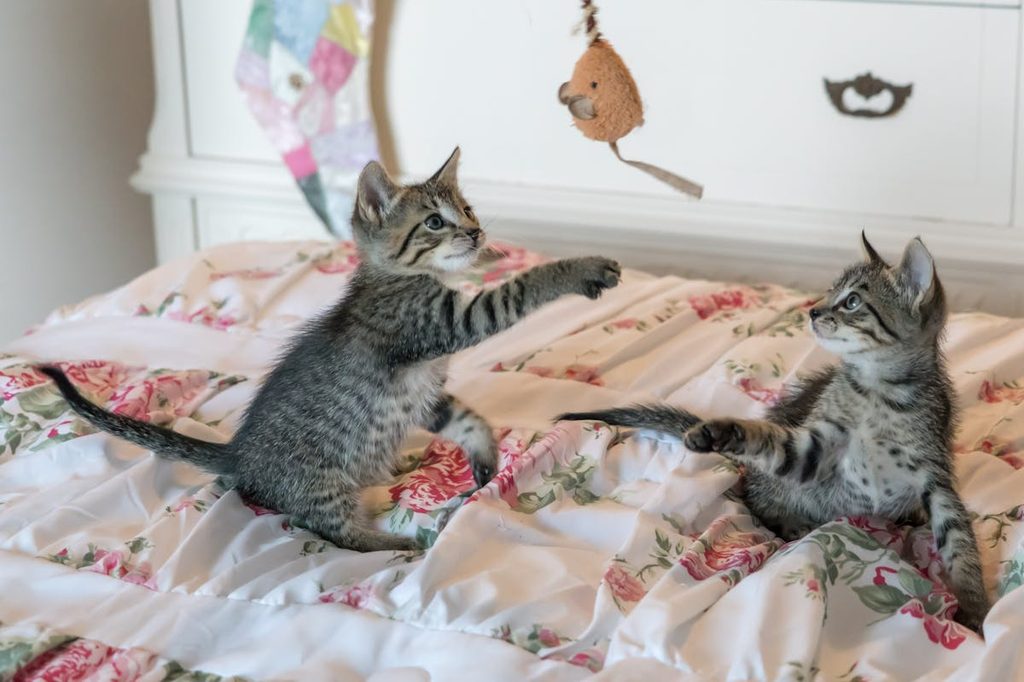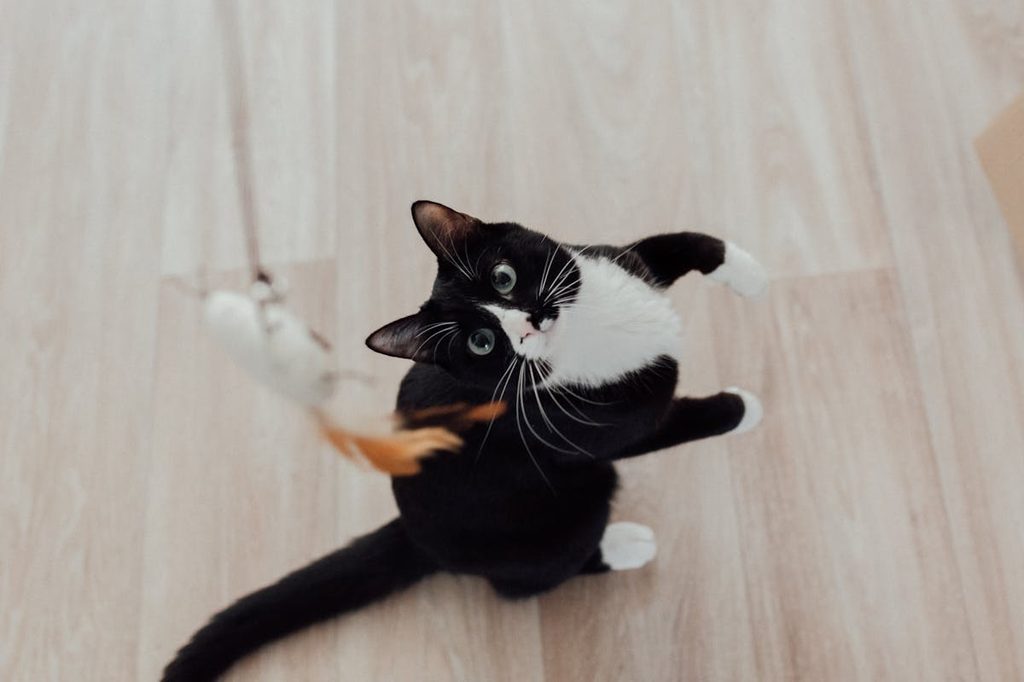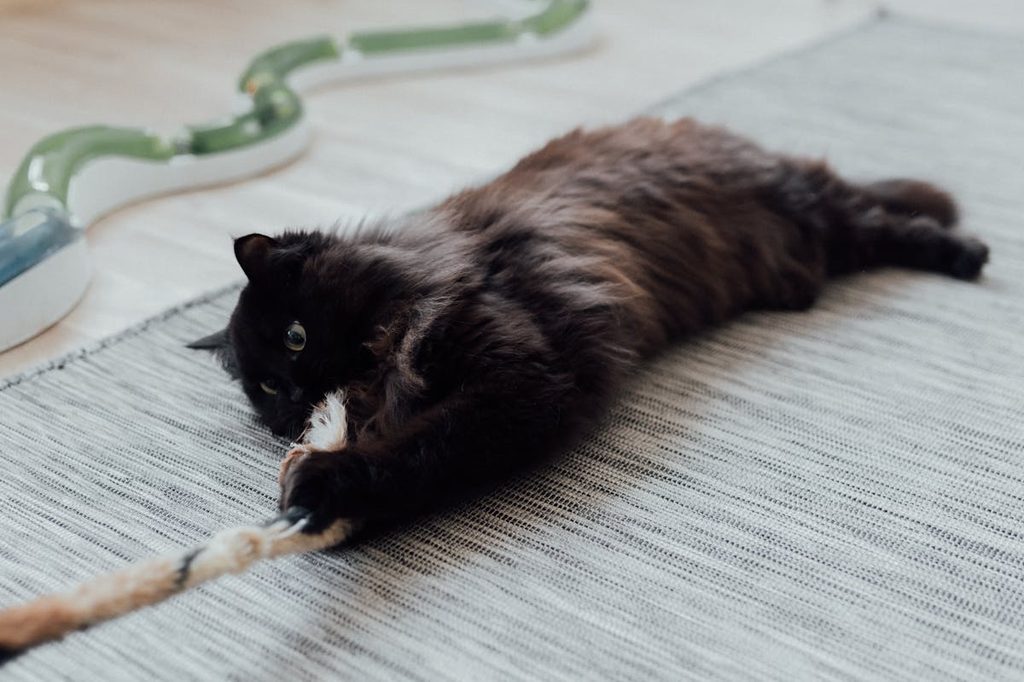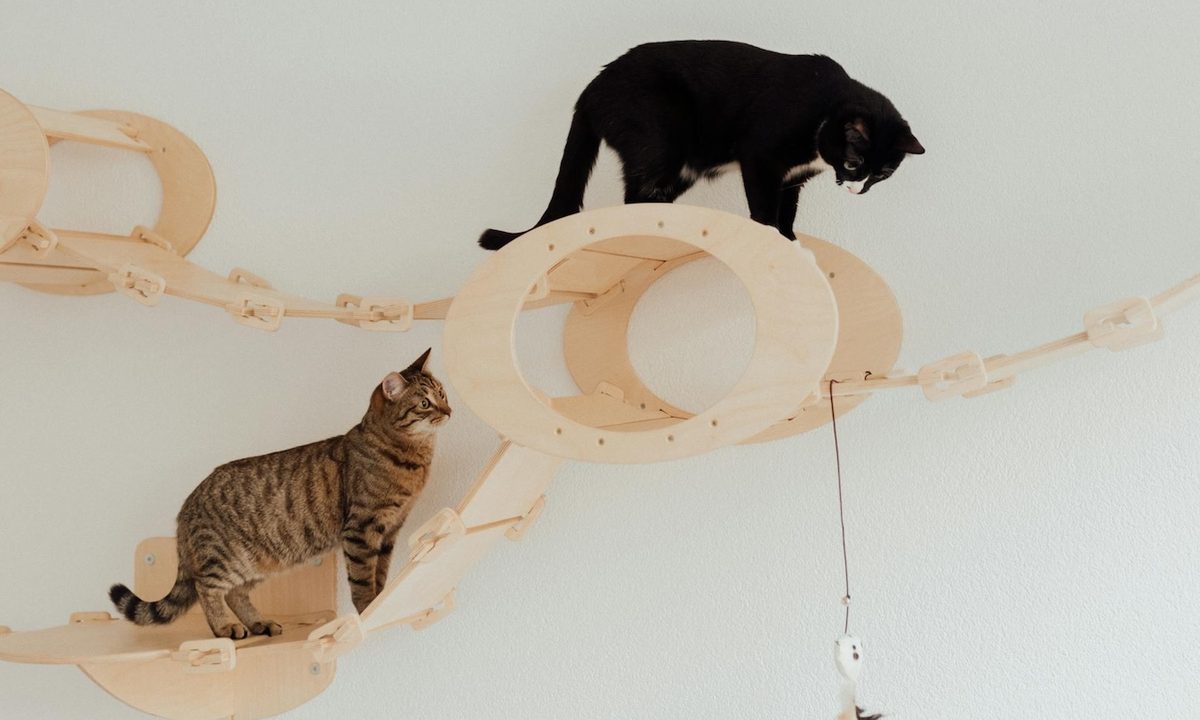Cats can sometimes get the short end of the (squeaky) stick, at least when compared to their canine counterparts. Many dogs get daily walks, trips to the park, and plenty of other built-in opportunities to get their energy out, feel mentally stimulated, and stay physically fit. Cat exercise? We discuss that less often.
However, like dogs and humans, cats can become obese, stressed, and easily bored without physical activity. You may have heard recommendations that humans should log at least 150 minutes of moderate-intensity or 75 minutes of vigorous-intensity aerobic activity every week. What about our feline family members? Don’t sweat the answer. Read on for cat exercise duration, ideas, and how to get a lazy kitty to embrace exercise.
How much exercise does a cat need?

Generally, most adult cats benefit from at least 30 minutes of daily physical activity. Kittens usually need about an hour daily because they are often naturally more playful, have higher energy levels, and require more mental stimulation.
Importantly, these recommendations are general guidelines. Some cats do best with more exercise. Breed, age, energy, and individual temperaments will all affect how much physical activity your specific pet needs to thrive. For instance, some adult cats have just as much energy as kittens and may become bored or destructive without an outlet like exercise. A cat that’s sick or injured may need to scale back for a bit.
Your vet can give personalized tips, but avoiding physical activity should generally be temporary. Cat exercise can go by the wayside on your pet parenthood priority list, especially if your kitty is kept indoors. However, life inside still requires intentional movement. You likely still find ways to work out even when the weather outside is frightful. Some of the many benefits of cat exercise include:
- Weight maintenance and loss (if necessary)
- Lower risk for many chronic diseases, including diabetes and arthritis
- Improved strength and mobility as they age
- Mental stimulation
- Less destructive behavior
- Bonding (with human or furry family members)
Many of these may sound similar to the benefits we get from exercise — because they are.
What exercise can cats do?

Similar to humans, the best cat exercise is one your pet enjoys. Luckily, you have several options, such as:
- Wand toys. Wand toys often take the form of fishing pole-style playthings. You’ll usually find a stuffed animal and perhaps a feather or bell to “tease” a cat at the end of the pole. The toys engage their love of pouncing — a skill they use to pounce on prey in the wild — and provide aerobic activity (your arm may also get a workout, and playtime with wands gives the two of you a chance to connect).
- Cat trees. Cats can climb on these with other kitties or independently, making them an excellent choice if you’ll often be out of the house. They also double as a haven for a cat to retreat to elevated ground if stressed. Many have scratching posts that’ll save your sofa.
- Interactive toys. Some interactive toys dispense treats or require a cat to “hunt” for something delicious. Others may involve a feather or toy that pops out and then hides, stimulating how a cat’s prey acts in the wild.
- Lasers. Press the button and watch your kitty race around for the red dot. These toys can be fun but frustrate a cat. Ending the game by pointing the laser in a food dish, cat nip toy, or a tasty treat can make laser pointers a total win.
How to get a lazy cat to exercise
Some cats need a (figurative) kick in the tail to get moving. Do you know any humans like that? These tips might help turn your kitty from couch potato to gym class hero.
- Rule out underlying conditions. Discuss concerns about your cat’s activity level with your vet, especially if you notice decreased movement. Your cat may not be “lazy” but rather, injured or sick. Prompt care can make movement safer.
- Experiment with toys. No offense, but your cat might not like the toys you picked. Try different ones. Also, cats may become bored with toys, so rotating them and providing variety lets them play to their current preferences.
- Change the workout time. You may be a rise-and-grind type, but cats are crepuscular, meaning they’re most awake from dusk until dawn. Consider engaging them in play in the evening, such as after work. Bonus: You might find it helps you soothe workday stress.
Can you overexercise a cat?
Yes. While cats thrive in a lifestyle that includes regular physical activity, a go-hard-or-go-home mentality can exhaust a kitty. Look for signs of fatigue, such as panting, coughing, significantly slowing down, and attempting to hide or move away from the toy. Respect your cat’s wishes. If your cat seems too lethargic or has difficulty moving post-workout, you may need to scale back (and call a vet).
Closing thoughts

Adult cats require about 30 minutes of exercise daily, and kittens generally need around an hour of daily physical activity. These guidelines are baselines — watch your cat, not the clock. Some kitties will need more. Other times, a cat may need a rest day, such as recovering from an illness. If you’re concerned about your pet’s activity, call the vet, especially if they appear more energetic, destructive, or lethargic than usual. Your vet can do a workup, rule out underlying conditions, and provide personalized tips on cat exercise.




